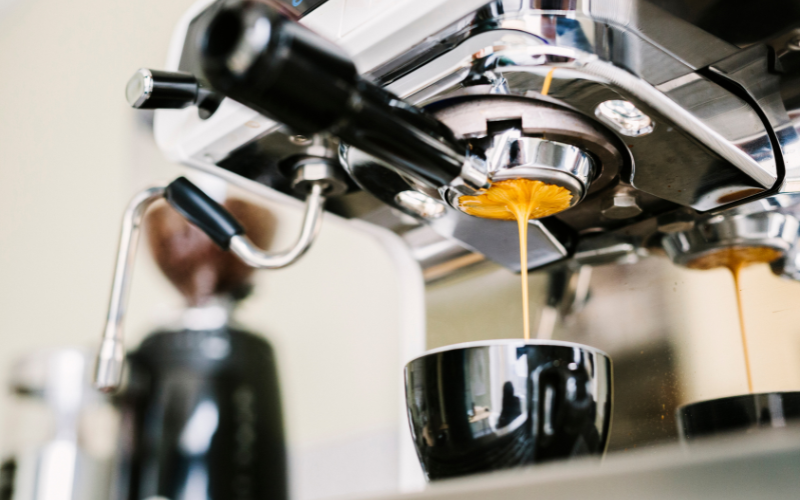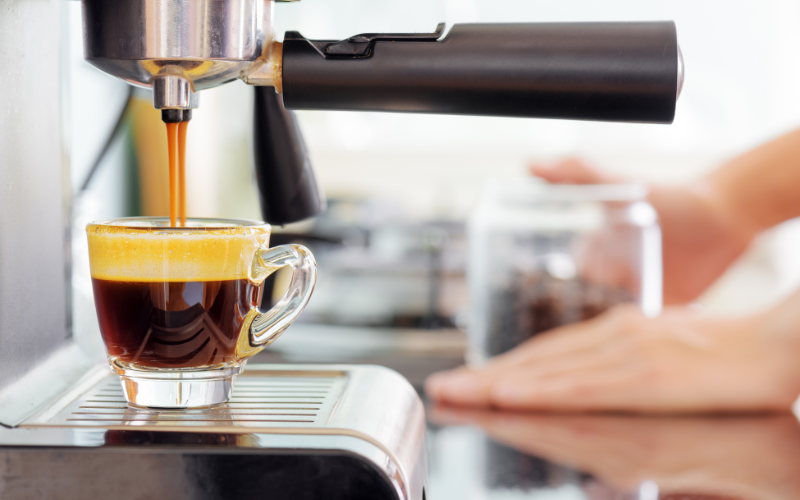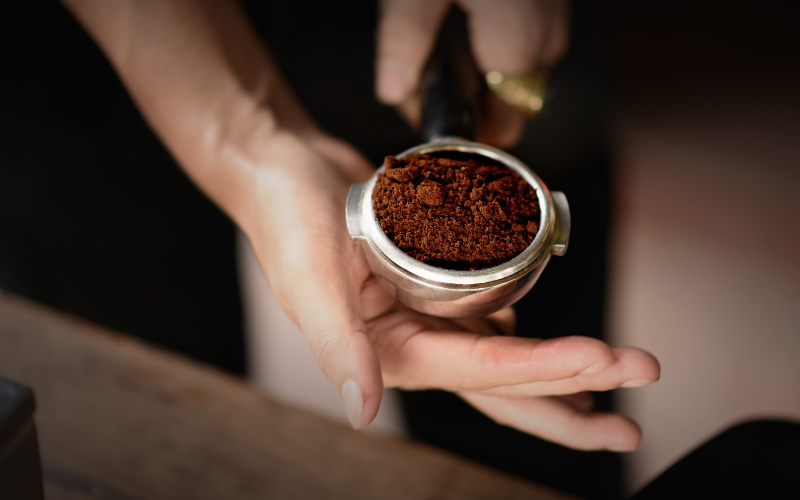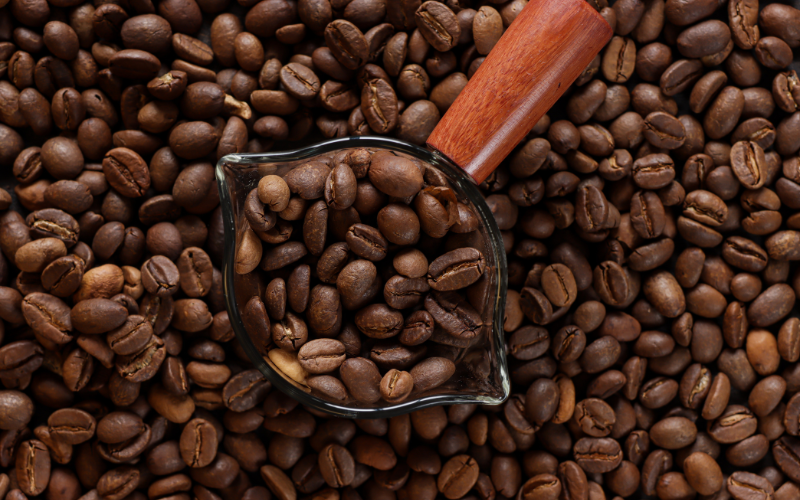How to Choose the Best Coffee Beans for Espresso
What type of coffee is best for espresso?
- Can I make espresso with any coffee beans?
- What creates crema in espresso?
- How long should an espresso take to pour?
- Is espresso good for health?
- Where can I buy coffee beans or coffee blends for espresso?
---
What coffee beans should you choose for your espresso machine? Can you use the old coffee beans in your cupboard? You probably already know that there are hundreds of varieties of espresso coffee beans out there, each with its own unique flavour profile, so how do you decide which ones to get?
If you are an espresso aficionado, choosing the best coffee beans for espresso requires some knowledge about the various types of coffee beans and their qualities and it can surely take you down a rabbit hole. This article provides comprehensive information about espresso as an approach to coffee, plus the main types of coffee beans you can use for it so you can start brewing the perfect shot of espresso.
What is Espresso?

Meet espresso, the dark, rich elixir that fuels mornings and powers late nights. Espresso is a coffee brewing method that involves forcing hot water under pressure through finely ground, freshly roasted coffee beans. The result is an extracted coffee in its most concentrated form.
Espresso is the base for many other popular coffee drinks, including cappuccino, latte, and long black. Espresso is higher in caffeine than other types of coffee, making it a popular choice for those who need an extra energy boost. When made correctly, espresso is a delicious and complex beverage that can be enjoyed on its own or used as a foundation for other specialty coffee.
What Makes the Perfect Espresso Shot?
There are a few factors that contribute to a perfect espresso shot. The most important factors are the technique you use, grind size, dose, and tamp.
The first thing to get down pat is your technique. Having a repeatable technique when making coffee is a bit like following a recipe. By doing things the same every time you will achieve consistent results time and time again. When making coffee there are some important things to keep consistent.
First up is your dose. The dose is the amount of coffee you are using each time. If making coffee on an espresso machine, this would be how much coffee you are putting in your filter basket. Filter baskets come in many different sizes and fit different amounts of ground coffee. Investing in a set of scales will not only help you achieve consistency in this department but will also qualify you as a coffee geek. Scales can also save you money in the long run as they will minimise waste and help you nail your shot much quicker.
Next up is tamping technique. When tamping, try not to focus too much on how hard or soft you tamp but more so tamping straight with a consistent amount of pressure every time, this way if your espresso is pouring too fast or slow you can put it down to the grind setting.
Finally, grinding your coffee fresh for each brew will have a huge impact on flavour. Investing in a burr grinder can be cheaper than you think and will allow you to adjust the grind as needed. There is nothing better than the smell of freshly ground coffee…. Oh wait the taste!
How is Good Espresso Supposed to Taste?

A properly made espresso should have a deep, rich flavour that is balanced and not too bitter. When made correctly, espresso should have a balance of sweetness, acidity and bitterness, with subtle flavours of chocolate or fruit, even floral notes. It should be a well-balanced coffee, with no one flavour dominating the others.
The espresso should be made with freshly ground coffee for espresso that has been roasted to an ideal roast profile. The grind should be set to an optimal particle size and the water should be at a temp range of between 93-95 degrees The espresso extraction should take between 22-30 seconds resulting in espresso of approximately 30ml or if weighing out 35-45 grams. Once brewed, the espresso should have a thick layer of foam on top, known as crema. The crema is indicative of freshly roasted beans and should look a similar colour to the roast profile of the beans you are using.
What Is the Aroma of a Perfect Espresso?
To the untrained nose, espresso might just smell like, well, coffee. But those who are familiar with espresso know that it has its own intense coffee aroma. A good espresso should have a hint of sweetness, as well as a bit of bitterness. There should also be a touch of acidity, which gives espresso its characteristic bite.
When all of these elements come together, the result is a delicious and aromatic beverage that is simply irresistible. So the next time you take a sniff of espresso, see if you can pick out all of these different aromas.
How to Make the Perfect Shot of Espresso
Espresso is a strong, concentrated coffee that is enjoyed by coffee lovers around the world. But how do you make it? The 5 most important factors to making the perfect espresso shot are: Water Pressure, Extraction Time, Water Temperature, Grind Consistency, and Tamping. If any one of these is off, your shots will lose a lot of flavour so you have to make sure that these are on point.
Water Pressure
One of the most important factors in making excellent espresso is the water pressure. If the pressure is too low, the coffee will be weak and watery. If the pressure is too high, the coffee will be bitter and burnt-tasting. The ideal pressure for making espresso is 9 bars, which can be achieved with a specially designed espresso machine.
Extraction Time
The extraction time - the amount of time that water is in contact with the coffee grounds - is also critical. If the water is in contact with the grounds for too long, the coffee will be over-extracted and taste bitter. If the water is in contact with the grounds for too short a time, the coffee will be under-extracted and taste weak. The ideal extraction time will vary depending on factors such as grind size, but in general, it should be between 20 and 30 seconds. By paying attention to the extraction time, you can ensure that your espresso is perfectly balanced and full of flavour.
Water Temperature
When making espresso, it is important to use water that is between 93.5-94.5oC. This range of temperatures will extract the most flavorful espresso possible. If the water is too hot, it will scald the coffee and produce a bitter taste. If the water is not hot enough, the espresso will be weak and lack flavour.
Grind Consistency
The grind of your coffee beans is one of the most important factors in making a great cup of espresso. If the grind is too fine, the water will extract too much flavour from the beans, resulting in a bitter drink. If the grind is too coarse, the water will not extract enough flavour, and the espresso will be weak and watery. The ideal grind is somewhere in between these two extremes, and it can take some practice to get it just right. A good rule of thumb is to start with a medium grind and adjust as needed until you find the perfect consistency for your taste. With a little trial and error, you'll be making delicious espresso in no time.
Tamping
Tamping helps to compress the grounds, creating a consistent surface that allows water to flow evenly through the coffee. Tamping also helps to prevent channeling, which can occur when water flows too quickly through the coffee and creates tunnels, bypassing much of the flavour. To tamp properly, hold the tamper in your hand, the way you would hold a torch. Hold the portafilter in place against the bench, with your other hand, with the spouts hanging off the bench. Stand side onto the bench and with the hand holding the tamper, bring that arm up to a right angle, ensuring your wrist is straight. Press down evenly with moderate pressure, applying even pressure until the tamper is flush with the surface of the coffee. Turn the tamper slightly and repeat. continue tamping until the grounds are compacted and level. With practice, you will be able to feel when the grounds are properly tamped.
In this video National Barista champion runner up, Jade Jennings will demonstrate the importance and technique to tamping correctly to ensure an even extraction and balanced espresso. Watch here
How to Find the Best Coffee Beans for Espresso

When it comes to making a great cup of espresso, the quality of your coffee beans is just as important as the quality of your machine. In order to produce rich, flavourful espresso, you need to start with high-quality coffee beans that have been roasted to perfection. This can be a challenge, especially if you're not sure what to look for.
Tips to help choose the best coffee beans for espresso:
- Look for coffee beans that have been roasted specifically for espresso. These beans will have a full body and an intense, richer flavour profile. You can reserve your light roasts for other brewing methods.
- Avoid beans that have been pre-ground. These beans are more likely to be stale and will produce a weaker espresso.
- Choose a coffee bean that is fresh and displays a roast date on the pack. Coffee beans that have been sitting on the shelf for a while will not produce as flavourful of an espresso.
- Experiment with different coffee origins and blends to find the flavour that you prefer. There is no one perfect type of coffee for espresso, so it's important to find the one that you like the best.
- Buy your coffee beans from a reputable source. This will ensure that you're getting fresh, high-quality beans that will produce a delicious cup of espresso.
What type of coffee is best for espresso?
There is not one perfect type of coffee for espresso, but there are a few that are commonly used for the classic espresso blend. Some of the most popular types of coffee beans for this brewing process include:
Arabica
These beans are well-rounded and have a mild flavour. They're a good choice if you're looking for a classic espresso taste. Arabica beans are typically found in countries like Brazil, Colombia, Costa Rica, Ethiopia, Kenya, Indonesia, Madagascar, Mexico, Peru, Tanzania, Uganda, Yemen, Zimbabwe, and Vietnam. Arabicas are known for producing light, fruity notes. When roasted properly, they can create a rich, smooth taste.
Robusta
These beans tend to be stronger than Arabica, as have a higher caffeine content. They're often used in blends for a more intense espresso flavour. Robusta Coffee beans are most commonly grown in countries such as Argentina, Australia, China, India, Indonesia, Japan, Malaysia, New Zealand, Philippines, Papua New Guinea, Thailand, Turkey, and Vietnam. High quality Robusta is generally lower in acidity than Arabica Coffee. That means they're better suited for brewing darker roasts.
Blends
Blends are created when different types of coffee beans are combined together. Many espresso coffees are made with a blend of different types of beans. This can create a more complex flavour profile and produce a more well-rounded cup of espresso.
Decaffeinated
If you're looking for an espresso with less caffeine, you can opt for decaffeinated coffee beans. These beans have had the majority of their caffeine content removed, but they still retain some of the flavour profiles of their original bean.
What Roast Is Best for Espresso?
There is no one perfect roast for espresso. It all comes down to personal preference but most people prefer a coffee with a richer flavour profile when drinking espresso so it has the intensity to cut through milk. If you like to drink a straight up espresso you may like to try a single origin or microlot which may be more subtle in flavour but can show off different origins and processing methods that can display interesting and unique characteristics It's important to remember that the roast level is just one factor that affects the flavour of your espresso. The type of bean, the grind size, and the freshness of the beans will also play a role in the taste of your espresso. How you prepare your espresso will also affect the final flavour.
Utilizing different roasts is a great way to experiment with the flavour of your espresso. Try different roasts and see what you like best. You may be surprised at how much of a difference the roast level can make.
How should coffee beans be ground for espresso?

In order to make a perfect espresso, it is essential to start with freshly ground coffee beans. The grind size is important because it affects how long it takes for the water to extract the flavours from the beans. If the grind is too coarse, the espresso will be weak and watery. If the grind is too fine, the espresso will be bitter and harsh. The perfect grind for espresso is somewhere in between, allowing the water to flow through the grounds at just the right speed.
You'll also need to make sure that your grinder is properly calibrated. If it's not, you may need to adjust the grind size until you find a setting that produces the flavour and strength that you're looking for.
Are Blends Better than Single Origin for Espresso?
When it comes to choosing espresso beans, there are two main types: single origin coffees or microlots and blends. Single origin espresso is made with beans that all come from the same region, while blends are a mix of beans from different regions. So, which of the two is better?
When it comes to taste, it really depends on personal taste. Some espresso drinkers prefer the bold, complex flavours of a blend, while others prefer the more distinct taste of a single origin espresso.
More Tips on Buying Coffee Beans
General Rules and Tips on Buying Coffee Beans
- If you're going to buy beans, make sure you follow the general guidelines regardless of which brew method you use. However, if you're using an espresso shot, these rules are even more crucial because they affect the quality of your shots more than any other brewing technique.
- Ideally, you should buy your coffee from specialty coffee roasters because they'll give you fresher and higher quality coffee. But if you do choose to buy from large roasters and wholesale coffee companies, make sure you check out the roast date. Most of these companies roast weekly, so you can get your coffee on the same day or the next. Don't buy coffee that was roasted two weeks ago though; as you will have less time to get the best out of it If you're buying coffee online, look at the packaging to see if it says anything about the freshness of the product. You definitely want to ensure you will receive your beasn as close to the roast date as possible. Don't buy too much coffee beans at once. If you don't finish using up your beans before they age you are basically throwing money down the drain. You can also sign up for coffee subscription so you get a steady supply of coffee beans eliminating the need to buy in bulk.
- If you're buying whole bean coffees, buy them when they're freshly roasted. If you don't have a coffee grinder, make sure you only get small amounts of pre-packaged ground coffee.
- Learn as much as you can about your roaster. Get familiar with their roasting equipment, and their methods, and be sure to check out the reviews of your coffee roaster as well.
- Avoid coffee that is untraceable. If you don't know where the beans come from, then they're probably not good quality, and bad beans will only give you bad coffee.
Buy Australia’s Favourite Coffee Beans Online Here
The Perfect Blends to Make Espresso With
Veneziano only sources the highest quality beans from around the globe, which are then roasted to perfection and blended together to create unique flavour profiles. Veneziano offers a variety of espresso blends, each with its own distinct flavour coming from the different specialty grade coffee beans. Whether you're looking for a rich and bold espresso or a delicate and nuanced one, Veneziano has a blend that will suit your taste.
Soar Seasonal
Our house blend served in all Veneziano flagship cafes. Soar has a medium body that is fruit-forward. It has notes of pineapple, cherry, chocolate malt and honey. It is composed of 34% Colombia Coocentral, 33% Brazil Mantiqueira, 33% Ethiopia Sodu
Crave
Crave is our best-selling blend. It is intense with a full body yet creamy with low acidity. If you prefer your coffee black, Crave can be more of an intense experience. We therefore recommend this bolder blend through milk, with notes of almond, caramel and dark chocolate. It is a blend of 50% Brazil Serra Negra, 30% Colombia Coocentral, 20% India Sethuraman Estate Robusta.
Elevate
Medium body, velvety blend. Elevate is our all rounder blend that works well with or without milk. Present are milk chocolate tones, as well as hints of cashews, spice. It gives off a nutty flavour and a honey finish to give it extra dimension. It has a blend composition of Brazil Serra Negra and a Colombia Coocentral.
Aspire
Aspire is our organic coffee. It is Australian Certified Organic by the Biological Farmers Association which guarantees no chemicals or pesticides were used in growing, processing or roasting the beans. It is also Fairtrade certified which ensures a better price for producers in third world countries and also stringent environmental practices. We uniquely source these beans direct from Fairtrade cooperatives, not local brokers. This means they are fresher, competitively priced and sourced on quality – it’s not just a badge. Aspire is a blend of the following coffees: Peru Atahualpa, Colombia San Javier, and Ethiopia Yirgacheffe. It has tasting notes of cocoa, stone fruits and walnuts.
Glide Decaf
Our Glide decaf is produced using the Swiss Water Process and is a blend of Brazil and Colombia beans that packs in the flavour minus the caffeine. A decaffeinated blend with tasting notes of cinnamon, honey and milk chocolate. Buy decaf coffee beans online.
Where to Get Your Espresso Roast Coffee Beans
Now that we've gone over some tips on finding the best coffee beans for espresso, you might be wondering where you can get them. Here are a few places to start your search:
Specialty coffee roasters
Independent coffee roasters like Veneziano Coffee Roasters roast their coffee beans in small batches to ensure quality control and consistency. Here at Veneziano, we use our Diedrich Roasters to maximise flavour and deliver the optimum balance of acidity and sweetness for the ultimate cup. We also source our coffee beans from all over the world, with a focus on sustainably grown and ethically traded beans.
Shop online
You can also find a great selection of espresso roast coffee beans online. Websites like Amazon stock a variety of brands and types of beans, so you're sure to find something that suits your taste. Just be sure to read the reviews before making your purchase. You can also buy coffee beans online from your neighbourhood specialty coffee roaster or local coffee shop if they have an e-commerce website. It would be nice to show some love and support for small and medium enterprises.
Sign up for a subscription
Many coffee roasters offer coffee subscription services, which is a great way to ensure you always have fresh beans on hand. This is especially convenient if you drink espresso regularly. Plus, most subscriptions come with discounts and other perks, so it's definitely worth considering.
There you have it - our guide to finding the best coffee beans for espresso. By following these tips, you'll be well on your way to enjoying a delicious cup of coffee at home. Thanks for reading!
FAQs
Can I make espresso with any coffee beans?
You can make espresso with any regular beans, although some might produce a more decent shot than others. For those who enjoy a lighter profile and maybe something with a more interesting flavour profile give one of our ever-changing microlots a go.
What creates crema in espresso?
The crema is made from tiny bubbles of CO2 that float on top of your espresso after the extraction process. This thin layer of foam is formed when water passes through the coffee grounds during the process of making espresso. Ample crema on top of your espresso is an indicator that you are using freshly roasted coffee and you are doing it right.
How long should an espresso take to pour?
Espresso brewing is more an art than a science, so there is no definitive answer to this question. However, most coffee geeks agree that an espresso shot should take between 20-30 seconds to pour given standard brewing parameters. The specific time will also still depend on the grind of the coffee beans, how much coffee you are using and many other factors.
Is espresso good for health?
Yes! Espresso provides that extra caffeine kick which helps boost energy levels and alertness. Coffee also has antioxidants that help fight free radicals, which cause damage to cells. Caffeine also improves brain function and may help prevent Alzheimer’s disease.
Where can I buy coffee beans or coffee blends for espresso?
If you're looking for great coffee beans for making espresso, then you should definitely check out Veneziano Coffee Roasters. We have a really great selection of blends that are perfect for espresso. From organic coffee to decaffeinated coffee, Veneziano has the perfect pack of beans to suit your coffee taste. Plus, the staff in our four locations across Australia are always super helpful in terms of giving advice on which coffee beans to choose for your coffee preference.



